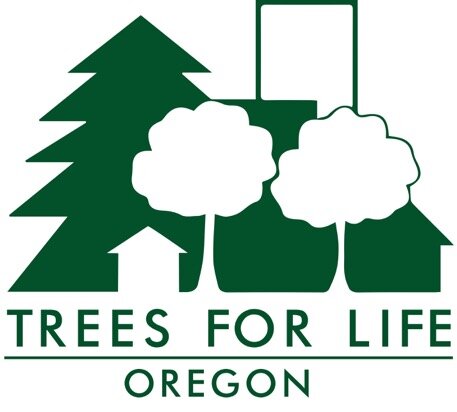New Report Quantifies East Portland’s Paltry Corridor Canopy
Over the past two years Trees for Life Oregon’s Bruce Nelson, an arborist and long-time community volunteer, inventoried all the street trees along five major north-south arteries in East Portland. What he and his fellow volunteers found among the 937 trees surveyed along 82nd, 102nd, 122nd, 148th, and 162nd avenues provides strong evidence that the residents and business people living, walking, working, and waiting at bus stops along these streets are in dire need of a healthy tree canopy.
Tree well along 102nd Avenue. Photo by TFLO.
The study found that street trees along these roads are sparse, small, and neglected. Further, they lack in species diversity, so important for canopy to be able to withstand species-specific pests such as the emerald ash borer. The trees on these streets are not plentiful enough, large enough, or healthy enough to give local residents desperately needed shade on blazing summer days or relief from the stresses of noise and air pollutants.*
Many factors contribute to this sad scenario—among them the history of these roads, their long-time service to high-speed vehicles rather than pedestrians, and their mostly curb-tight design, which precludes space for trees. Today some of these streets have a lot of commercial frontage, while some are mostly residential.
Climate crisis is here. Heat-island effects already have proved lethal to vulnerable residents in East Portland. We therefore urge the Portland Bureau of Transportation to include from the get-go, in its plans to improve arteries such as 82nd, 122nd, and 162nd avenues, designing space to plant large-form trees along them. Dangerously high air and surface temperatures along major city streets are just as unsafe to human health as dangerous pedestrian road crossings are. Trees are increasingly recognized as a vital part of Portland’s public infrastructure and should be a key element of any street development project.
Yet Portland has no master plan for tree planting or canopy improvements for 82nd, 102nd, 122nd, 148th, or 162nd and little maintenance is being done on the street trees surveyed. Significant, well thought-out canopy improvements are not part of PBOT’s current improvement plans for 82nd or 122nd avenues. Why not?
Designing with trees to help meet the public health needs of the low-income residents, immigrants, and people of color who disproportionately live in East Portland would help fulfill the City’s stated climate and equity goals. Trees for Life Oregon believes that to be truly “improved,” improved streets and sidewalks must include a built-in tree component. The big-picture/integrative approach we’re urging the City to take will require cross-bureau cooperation and strong City leadership.
The new report recommends a set of specific design and policy steps that City Council, PBOT, Urban Forestry, and other City bureaus should take in unison with one another to improve these transportation arteries with climate in mind so that this infrastructure investment will provide comprehensive, long-lasting benefits for local residents.
To fully understand how these streets became as tree-poor as this inventory shows them to be, besides tree inventory data and recommendations, the full report also presents an environmental history of these transportation corridors, written by historian David-Paul B. Hedberg.
*From 2010 to 2016 Portland Parks & Recreation's Urban Forestry carried out a citywide street tree inventory. But the data collected was based on neighborhood, not on long streets that cross neighborhoods, nor did that inventory examine tree diversity on a scale other than neighborhood or the city as a whole. This year the City started a new street tree inventory, expected to take three years.

